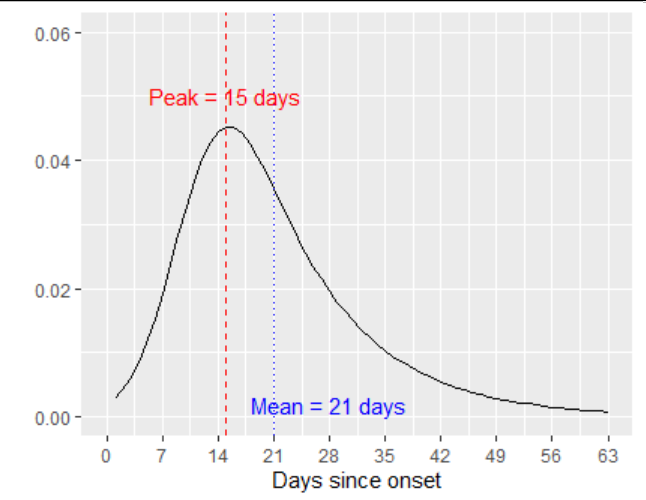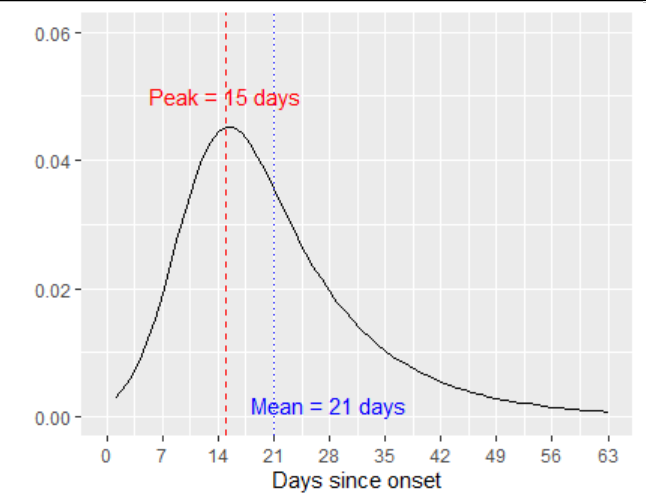Toby Young and Carl Heneghan and other “lockdown sceptics” have been making strong claims about how they can show lockdown has had no impact on the epidemic, based on simple maths. But there’s a problem with their argument. [THREAD] https://lockdownsceptics.org/2020/04/23/latest-news-9/">https://lockdownsceptics.org/2020/04/2...
Understanding the problem with this argument is important, because -- taken at face value -- it could lead us to end lockdown on spurious grounds. It’s been getting a lot of coverage both on TV (here’s Carl Heneghan on Newsnight) https://twitter.com/BBCNewsnight/status/1252355767337771010?s=20">https://twitter.com/BBCNewsni...
and in the print media: https://twitter.com/LonsdaleKeith/status/1252239061458223104?s=20">https://twitter.com/LonsdaleK...
and it is apparently influencing decision makers: https://twitter.com/nicholaswatt/status/1252994901605834758?s=20">https://twitter.com/nicholasw...
Here’s what Carl Heneghan says: “The peak of deaths occurred on April 8, and if you understand that then you work backwards to find the peak of infections. That would be 21 days before then, right before the point of lockdown.” Simple, right?
This article goes on to explain that, “This is based on the delay in the time it takes for an infected person to fall seriously ill and die - three weeks on average”. https://uk.news.yahoo.com/lockdown-damage-outweighs-coronavirus-warning-121940675.html">https://uk.news.yahoo.com/lockdown-...
OK, so the lockdown started on March 23rd in the UK, but according to the simple maths the peak infection day was March 18th, 5 days before the lockdown commenced. Hence the lockdown was entirely unnecessary, say Heneghan, Young et al.
One thing we might ask concerns the source for the 21 days figure. I believe it’s this research paper, which says, “we estimated the mean duration from onset of symptoms to death to be 17·8 days”. https://www.thelancet.com/journals/laninf/article/PIIS1473-3099(20)30243-7/fulltext">https://www.thelancet.com/journals/...
We get 21 days if we add an average 3 days incubation (infection to onset of symptoms). So let’s assume that 21 days is indeed the mean duration from onset of symptoms to death. Let’s also assume that April 8th was the peak day for Covid deaths in the UK.
Here’s the important part. I don’t think you can just subtract 21 days from the date of peak deaths to find the peak infection day. The reason is that the distribution of onset-to-death is not likely to be normally distributed.
It’ll have a long tail, in part because doctors are good at keeping patients alive for longer (e.g., using ventilation), without changing the ultimate outcome.
Incidentally, the Diamond Princess cruise ship provides an example of this long tail -- the 14th patient died on April 14th, 45 days after all patients disembarked. (Proponents of low IFR prefer to ignore what happened after 21 days and pretend there were <10 fatalities)
So the true distribution will be skewed to the right -- it’ll look something like this (for the geeks, this is a convolution of a gaussian and an exponential).
Why is this important? Because the mode (peak) of this distribution is not bang in the middle -- it’s pushed to the left of centre. Notice in this example that the peak is at 15 days, but the mean duration is 21 days.
A peak of 15 days would put the peak infection day at March 24th, i.e., the day *after* lockdown. Exactly as we’d expect if lockdown had the effect of dramatically reducing R_0.
To summarise, you can’t just subtract 21 days to find the peak infection day. Unless someone can show me that the underlying onset-to-death distribution is normal, my conclusion is that a peak in deaths at April 8th is exactly what you’d expect if lockdown was effective.
If you think I& #39;ve got this wrong, and simple subtraction of 21 days is fine, let me know.
@STWorg @Steve__Hammett @Mike_Page @JKSteinberger @devisridhar @deevybee @timothycbates @EJWagenmakers @psy_farrell @jeffrey_bowers @MarcusMunafo @AndrewHeathcot8
@STWorg @Steve__Hammett @Mike_Page @JKSteinberger @devisridhar @deevybee @timothycbates @EJWagenmakers @psy_farrell @jeffrey_bowers @MarcusMunafo @AndrewHeathcot8

 Read on Twitter
Read on Twitter



